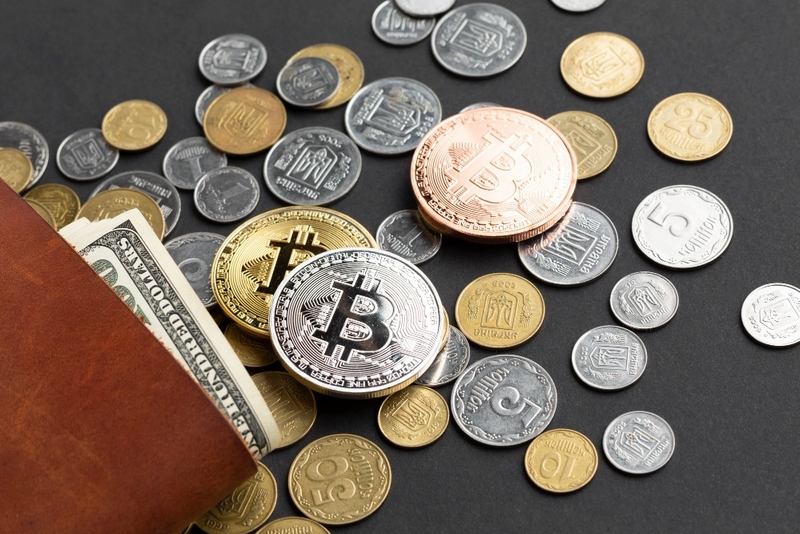

What Is a Fixed Exchange Rate? Definition and Examples
A fixed exchange rate is a system where a country’s currency value is tied or pegged to another major currency, like the US Dollar or the Euro. This setup helps maintain currency stability, making international trade and investment more predictable. In this discussion, you’ll learn what a fixed exchange rate means, how it operates, and where it’s applied, supported by real-world examples.
VELLIS NEWS
10 Jun 2025
By Vellis Team
Vellis Team
Automate your expense tracking with our advanced tools. Categorize your expenditures
Related Articles

Vellis News
29 October 2025
What Are Card Network Assessments
Card network assessments are fees charged by major card networks on every credit or debit card transaction. These fees are not the same as merchant or processor fees; rather, they are collected by the card networks themselves to fund and maintain the global payment infrastructure that enables billions of transactions daily.

Vellis News
10 June 2025
Gaming Fraud Prevention: A Comprehensive Guide
Gaming fraud prevention is all about the smart strategies and tools used to spot and stop cheating and scams in online gaming. With millions of players and tons of money flowing through games, fraudsters are always looking for ways to exploit weaknesses.

Vellis Developments
4 July 2025
Vellis Acquires PCI DSS Compliance
Vellis scored a major win this week when Visa officially added them to their Global Registry as a PCI DSS-compliant Service Provider. This puts the company in an exclusive club of payment processors that have jumped through all the security hoops required by the credit card industry.
We’ll also explore the benefits and drawbacks of this system, making it especially useful for economists, global business leaders, and currency traders who need a clear view of currency risks and stability.
Fixed Exchange Rate Definition
To break the definition into pieces, a fixed exchange rate is a system where a country’s currency value is officially set and maintained at a constant level against another currency, such as the US Dollar, or a group of currencies. This means the government or central bank intervenes regularly to keep the exchange rate stable, buying or selling its own currency as needed. This differs from a floating exchange rate, where the currency’s value changes freely based on market forces like supply and demand without direct government control. In currency exchange explained, fixed exchange rates play a key role in monetary policy by helping governments manage inflation and economic stability. They also regulate trade by minimizing unpredictable currency swings, which makes cross-border transactions and long-term contracts less risky for businesses. This stability can encourage investment and economic planning but requires constant intervention to maintain the fixed value.
How a Fixed Exchange Rate System Works
In a fixed exchange rate system, a country pegs its currency’s value to a stable benchmark like the US Dollar, Euro, or sometimes a basket of currencies. This pegging means the exchange rate stays within a set level or range, providing predictability in value. To maintain this peg, the country’s central bank actively steps in by buying or selling its own currency on the foreign exchange market. If the currency starts to stray from the fixed rate, the central bank uses its foreign reserves to bring it back in line. There are also variations like currency bands, where the exchange rate is allowed to fluctuate within a narrow range, and crawling pegs, where the fixed rate is gradually adjusted over time. Understanding how do exchange rates affect international trade is crucial here: a stable exchange rate reduces risks for exporters and importers, making trade and investment more secure by limiting sudden currency value changes.
Examples of Countries with Fixed Exchange Rates
Several countries use fixed or tightly managed exchange rates to support specific economic and strategic goals. For instance:
- Hong Kong pegs its dollar to the US Dollar to maintain financial credibility and attract international investors. As a major global financial center, Hong Kong benefits from the stability a fixed rate offers, helping to reduce uncertainty in trade and investment.
- Saudi Arabia pegs its Riyal to the US Dollar because its economy heavily depends on oil exports, which are priced in dollars. This peg ensures steady revenue from oil sales and protects the country’s budget from currency fluctuations.
- Denmark ties its Krone to the Euro through a tightly managed band system. Although Denmark is not part of the Eurozone, this alignment supports smooth trade with its European neighbors and reflects its political and economic integration with the EU.
Each of these countries uses a fixed exchange rate to minimize currency volatility, ensure trade consistency, and support long-term economic planning, especially important in sectors like finance, energy, and cross-border commerce.
Advantages of a Fixed Exchange Rate System
A fixed exchange rate system provides several important benefits for an economy. One major advantage is currency stability, which reduces uncertainty and attracts long-term foreign investment. This stability also helps businesses and individuals who rely on foreign currency exchange services online, as they can operate with clearer expectations about currency values. Additionally, fixed rates can help prevent inflation in countries that are vulnerable to economic shocks by anchoring their currency to a more stable one. Finally, the system supports predictable trade and pricing, making it easier for companies to manage cross-border transactions and build stable international partnerships.
Disadvantages and Risks of a Fixed Exchange Rate
While fixed exchange rates offer stability, they come with serious challenges. First, maintaining the peg requires massive foreign currency reserves so the central bank can intervene when needed. If reserves run low, defending the peg becomes difficult. There’s also the risk of speculative attacks. If investors believe the currency is overvalued, they may dump it in large volumes, pressuring the central bank and potentially forcing a devaluation. Lastly, a fixed system limits central bank flexibility. This basically entails that it’s harder to respond to domestic issues like inflation or unemployment because any move such as adjusting interest rates could threaten the fixed rate. Therefore, while stability is the goal, it can come at the cost of economic agility.
Fixed vs. Floating Exchange Rates: Key Differences
In order to neatly define key differences between fixed and floating exchange rates, we have compressed a clear side-by-side comparisons table:
| Feature | Fixed Exchange Rate | Floating Exchange Rate |
| Flexibility | Low – value stays constant or within a narrow band | High – value adjusts based on market forces |
| Volatility | Low – more predictable for trade and investment | Higher – can fluctuate daily based on demand/supply |
| Government Intervention | Frequent – central bank must maintain the peg | Minimal – market sets the rate naturally |
| Suitability | Often favored by developing nations for stability | Common in developed nations with strong institutions |
In between these two extremes, many countries use hybrid systems. For example, a managed float lets the currency move with the market but allows occasional central bank intervention. A crawling peg adjusts the fixed rate gradually over time, offering a mix of stability and flexibility. These middle-ground approaches help countries balance control with responsiveness to global economic changes.
FAQs
What is a fixed exchange rate in simple terms?
Explained plainly, a fixed exchange rate is a system where a country officially sets its currency’s value equal to another currency, like the US Dollar, or to a commodity such as gold. This helps keep the currency stable over time, reducing fluctuations and making international trade and investment more predictable and secure.
Why do some countries prefer fixed exchange rates?
Some countries prefer fixed exchange rates to maintain currency stability, which helps reduce uncertainty in international trade and investment. By keeping their currency value steady, they create a predictable environment for businesses and investors, encouraging economic growth and protecting the economy from sudden market fluctuations or speculative attacks.
How do governments maintain a fixed exchange rate?
Governments may adequately maintain a fixed exchange rate by using foreign reserves to buy or sell their own currency in the forex market.
Is the US Dollar under a fixed exchange rate system?
No, the US Dollar is a floating currency, determined by market supply and demand.
Can a fixed exchange rate change?
Yes, a fixed exchange rate can change. Governments may choose to increase or decrease their currency’s value relative to the currency or commodity it’s pegged to, often to respond to economic conditions. For instance, in times of crisis or unsustainable pressure, a country might also abandon the fixed exchange rate system entirely and allow its currency to float freely.
Are fixed exchange rates common today?
They are less common than floating systems but still used in specific economies with strategic trade or monetary needs.
References
LinkedIN: Exchange Rates 101
https://www.linkedin.com/pulse/exchange-rates-101-ajay-kumar-p-e-csp-bcee
Investopedia: What is Fixed Exchange Rate? Definition and Examples
https://www.investopedia.com/terms/f/fixedexchangerate.asp
The Entourage: Understanding Currency Exchange Rates: A Beginner’s Guide
Corporate Finance Institute: Fixed Exchange Rate
https://corporatefinanceinstitute.com/resources/foreign-exchange/fixed-exchange-rate

Ready to transform your financial management?
Sign up with Vellis today and unlock the full potential of your finances.
Related Articles

Vellis News
18 August 2025
Nostro Account vs. Vostro Account: Understanding the Difference
International financial institutions across borders rely heavily on interbank relationships to move money securely and efficiently. Two key terms that often come up in this cross-border context are Nostro and Vostro accounts, both of which play a foundational role in global finance.

Vellis News
25 October 2025
Multi-Currency Accounts vs. Stablecoin
Multi-Currency accounts vs. stablecoins represent two modern approaches to handling international payments and managing currency exposure. Both aim to simplify cross-border transactions, cut conversion costs, and offer better liquidity control, yet they work through entirely different systems.

Vellis News
25 March 2025
What are SEPA Payments? Types, Benefits & More
SEPA payments represent the cosmopolitan and revolutionary payment method conducted mainly in the EU and certain non-EU countries. Its pivotal role in simplifying euro-denominated transactions has become a game changer for numerous industries. SEPA payments represent a fantastic initiative by the European Union to streamline standardized payments across Europe and make them faster and more secure.
We use cookies to improve your experience and ensure our website functions properly. You can manage your preferences below. For more information, please refer to our Privacy Policy.
© 2025 Vellis Inc.Vellis Inc. is authorized as a Money Services Business by FINTRAC (Financial Transactions and Reports Analysis Centre of Canada) number M24204235. Vellis Inc. is a company registered in Canada, number 1000610768, headquartered at 30 Eglinton Avenue West, Mississauga, Ontario L5R3E7, Canada.

